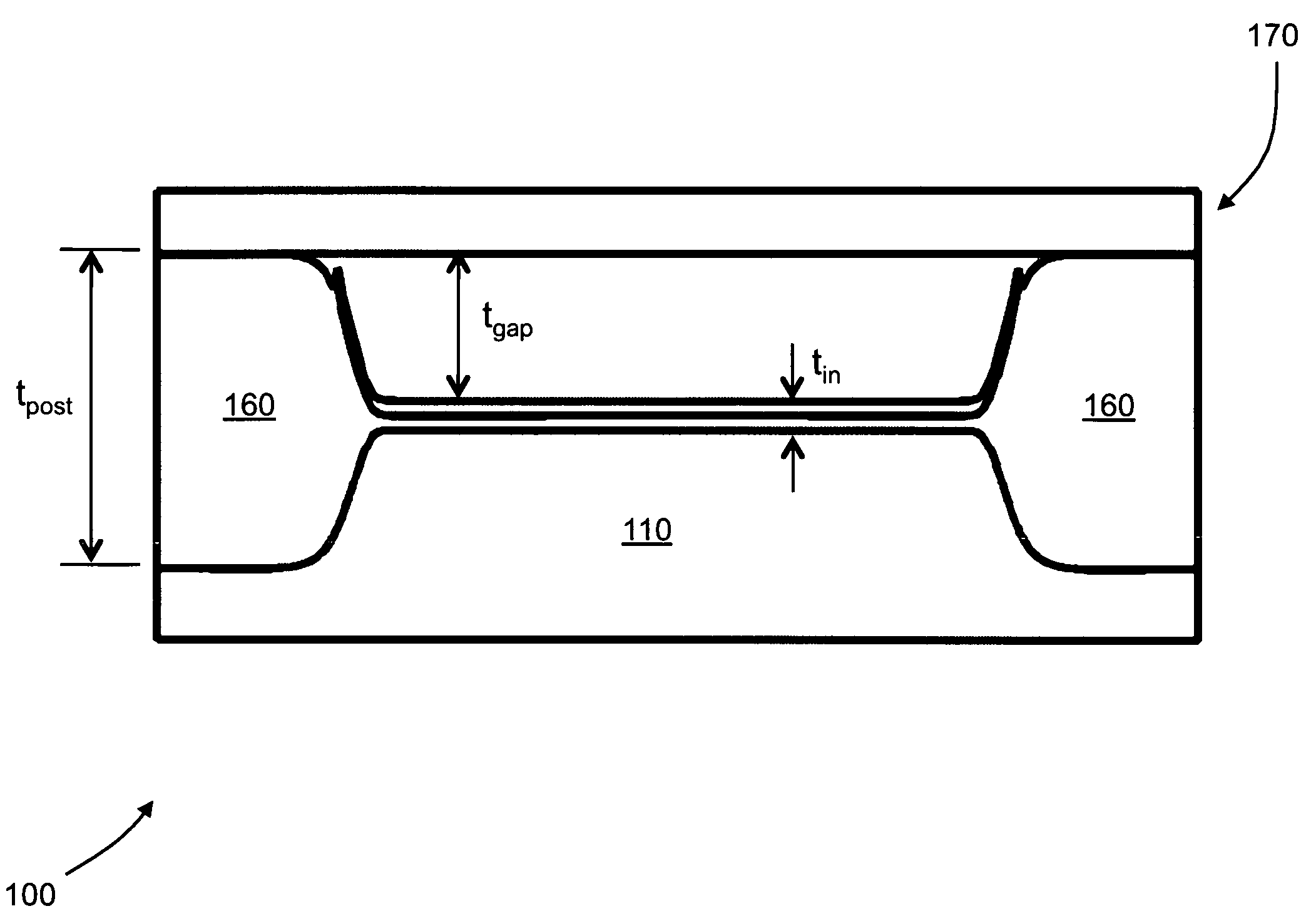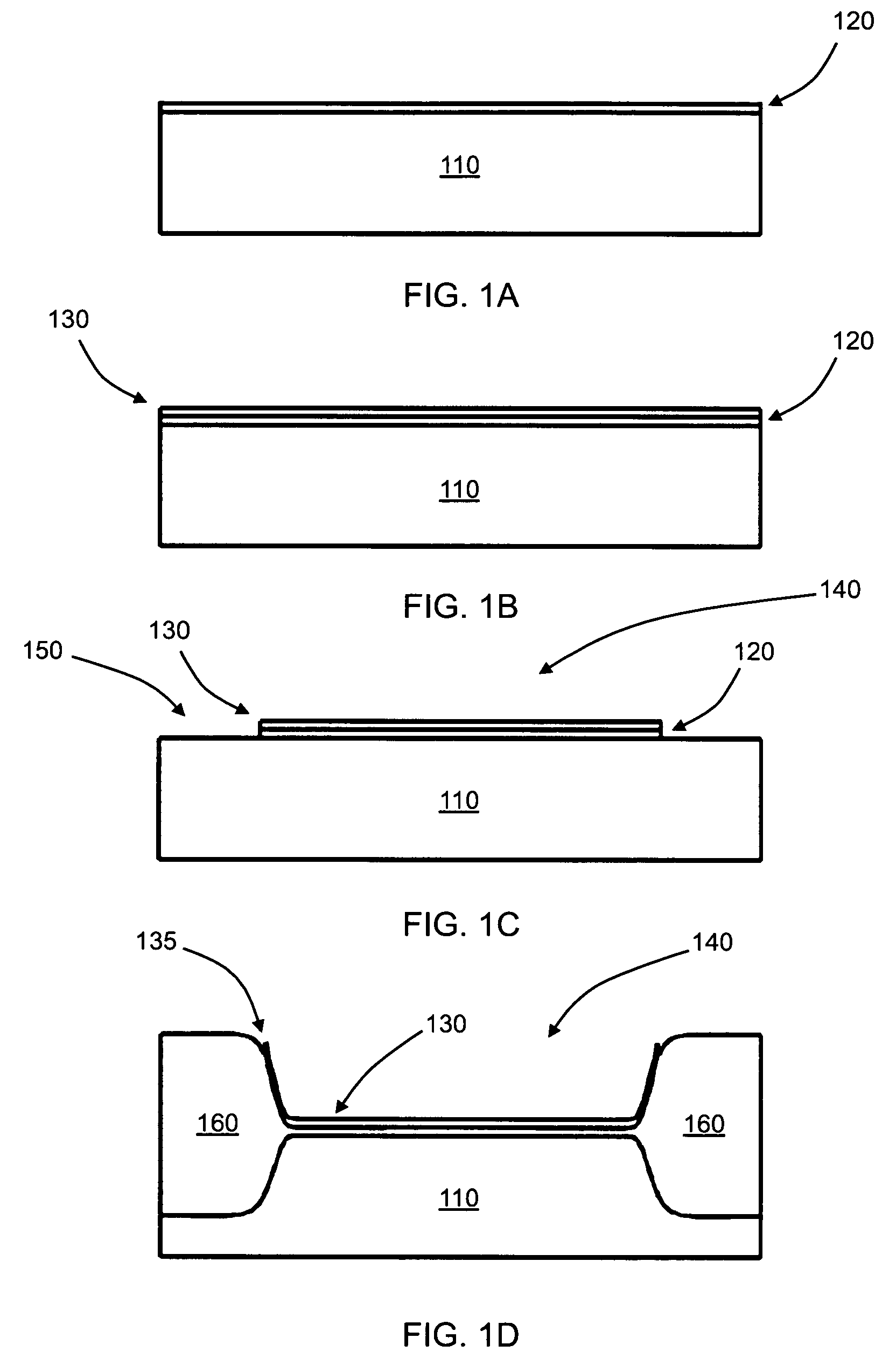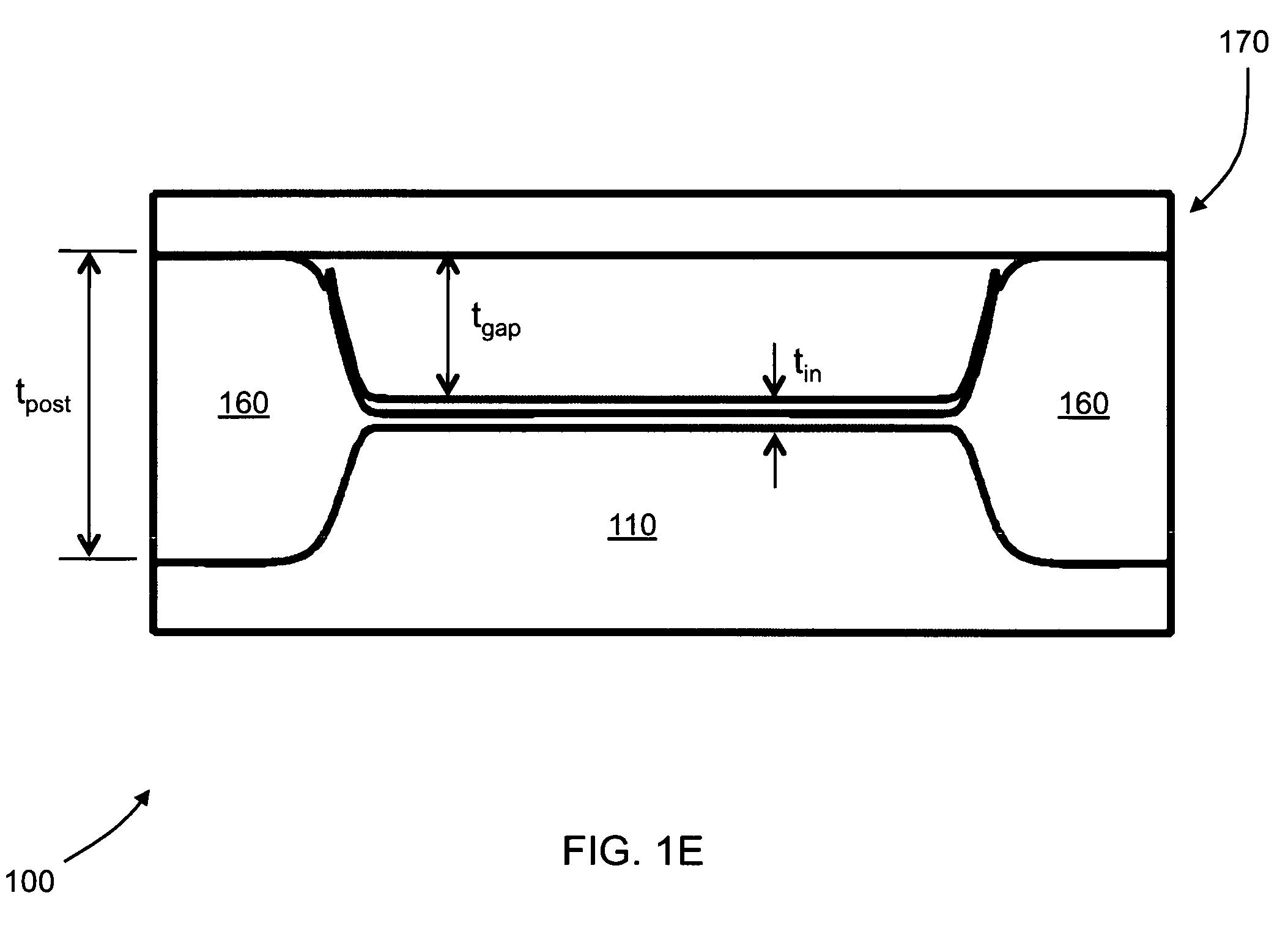Fabrication of capacitive micromachined ultrasonic transducers by local oxidation
a capacitive micromachined and ultrasonic transducer technology, applied in the direction of mechanical vibration separation, electrical apparatus, basic electric elements, etc., can solve the problems of difficult to control the thickness of the membrane, the difficulty of adjusting the gap height or thickness, and the stress of the membrane, etc., to achieve low parasitic capacitance, high breakdown voltage, and cost-effective
- Summary
- Abstract
- Description
- Claims
- Application Information
AI Technical Summary
Benefits of technology
Problems solved by technology
Method used
Image
Examples
examples
[0060]CMUTs for HIFU therapy require a thick vacuum gap for high output pressure and a high breakdown voltage. An example HIFU CMUT, similar to the CMUT 700 of FIG. 7E, requires tpost=2 μm, tin=0.2 μm, and tgap=0.3 μm. Based on these required thicknesses, a step height of tstep=0.62 μm is desired. The maximum allowed second oxidation thickness t2=5 μm is determined based on this desired step height tstep and the size of the CMUT to be fabricated. The first oxidation thickness t1=1.7 μm is calculated based on the determined t2 and the step height tstep. The calculated t1 and determined t2 give a 6:1 BOE over-etch time of 3.9 minutes. The substrate step is fabricated following the process of FIG. 14 and the HIFU CMUT is fabricated from the process of FIG. 7.
[0061]CMUTs for imaging require a thin vacuum gap for better sensitivity and thick oxide posts for low parasitic capacitance. In addition, a flat substrate step is required for better performance and larger step heights generally r...
PUM
 Login to View More
Login to View More Abstract
Description
Claims
Application Information
 Login to View More
Login to View More - R&D
- Intellectual Property
- Life Sciences
- Materials
- Tech Scout
- Unparalleled Data Quality
- Higher Quality Content
- 60% Fewer Hallucinations
Browse by: Latest US Patents, China's latest patents, Technical Efficacy Thesaurus, Application Domain, Technology Topic, Popular Technical Reports.
© 2025 PatSnap. All rights reserved.Legal|Privacy policy|Modern Slavery Act Transparency Statement|Sitemap|About US| Contact US: help@patsnap.com



